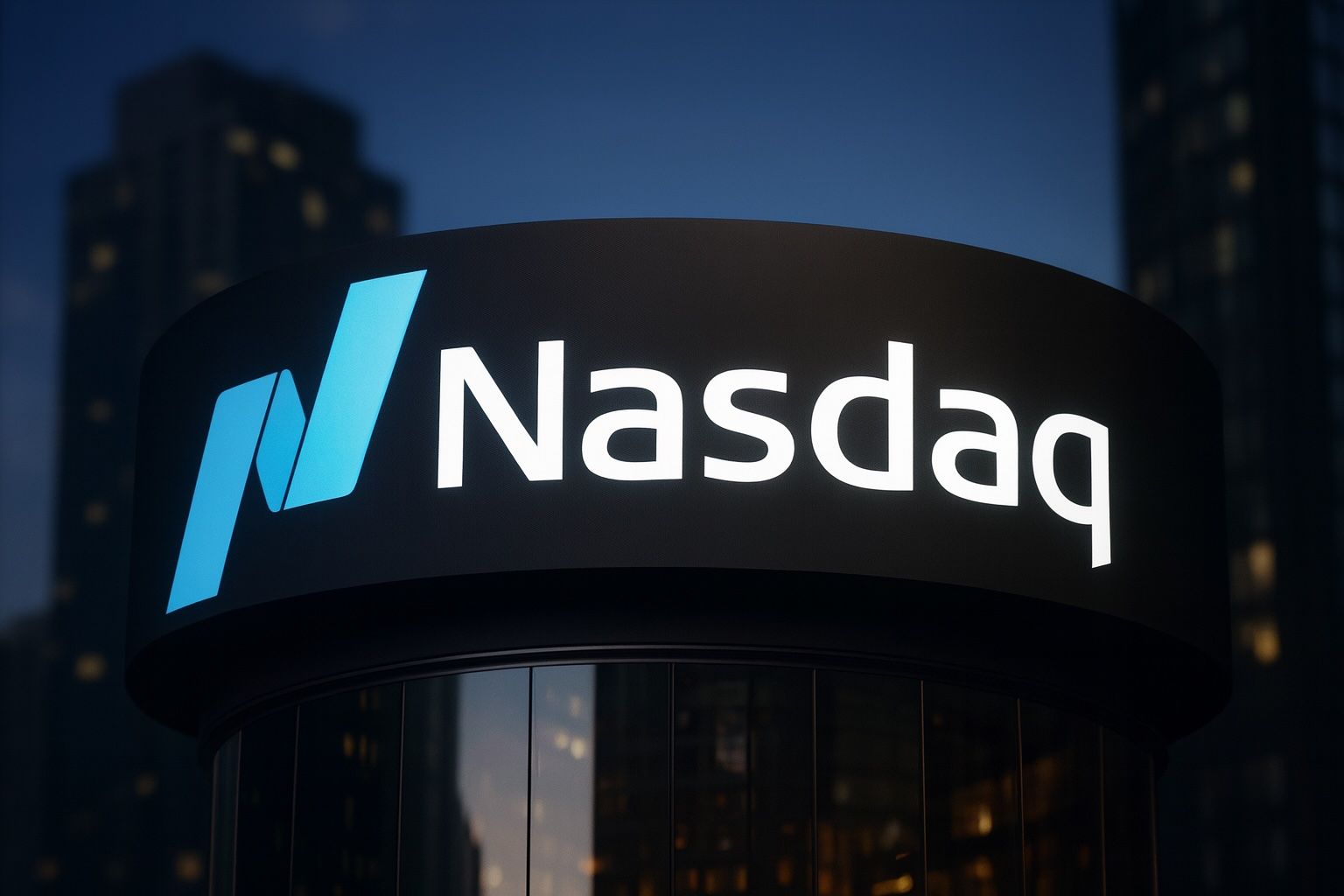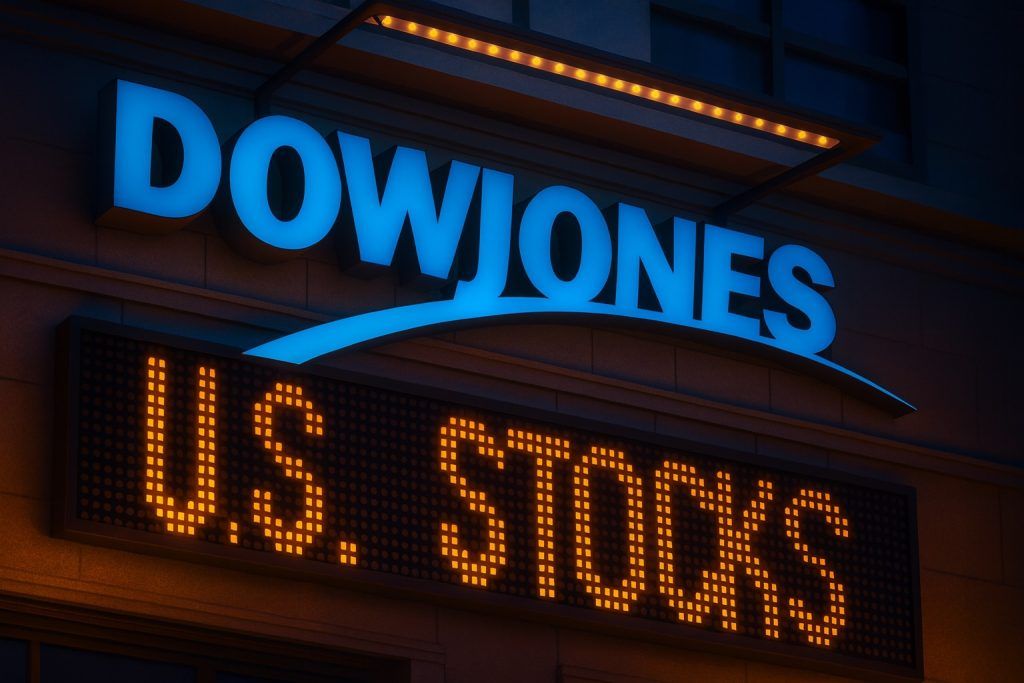Dateline: Saturday, November 22, 2025 — New York
U.S. stock markets are closed today, but the Nasdaq Composite enters the weekend trying to shake off one of its choppiest stretches of the year. After a violent AI-driven selloff on Thursday, the tech‑heavy index bounced on Friday as traders piled back into big tech and priced in higher odds of a Federal Reserve rate cut in December. Still, the Nasdaq just wrapped up its third straight weekly decline and is now several percentage points below its October peak. [1]
Below is a full rundown of what happened to the Nasdaq on November 21–22, 2025, and what it means for investors watching tech and AI stocks.
Market Snapshot: Nasdaq Today in Numbers
- Friday close (Nov. 21):
- Nasdaq Composite: 22,273.08, up 195 points (+0.9%) on the day [2]
- Weekly performance:
- Nasdaq fell about 2.7% for the week, marking its third consecutive weekly loss and leaving the index roughly 7% below its October high. [3]
- Year to date:
- Despite the pullback, the Nasdaq remains up around 15% in 2025, still outpacing the S&P 500 and Dow on a full‑year basis. [4]
Trading on Friday looked very different from Thursday’s meltdown. All three major U.S. indexes — the Dow, S&P 500 and Nasdaq — closed sharply higher, with the Nasdaq leading tech peers but still unable to erase the damage done earlier in the week. [5]
A Roller-Coaster Week for AI and Tech Stocks
Thursday: AI euphoria flips to panic
The tone for this week’s Nasdaq volatility was set on Thursday, November 20, when the index suffered a brutal reversal:
- The Nasdaq Composite dropped about 2.15%, erasing an early rally and finishing at its lowest close since September 11. [6]
- The index’s intraday swing — nearly five percentage points from peak to trough — was its biggest since April, underscoring just how nervous investors have become about AI valuations. [7]
- An index of semiconductor stocks fell nearly 5%, with Nvidia ending the day down more than 3% after initially surging on blockbuster earnings and guidance. [8]
Reports from outlets including The Guardian and Reuters framed the selloff as a renewed bout of “AI bubble” fears, with investors questioning whether the massive capital spending on AI data centers, chips and software can deliver profits fast enough to justify today’s prices. [9]
Friday: Fed hopes spark a relief rally
On Friday, November 21, markets staged a strong rebound:
- New York Fed President John Williams said the central bank could still cut interest rates “in the near term” without derailing its inflation fight, a remark that pushed the implied odds of a December Fed rate cut to roughly 70%+ in futures markets. [10]
- Lower Treasury yields and softer rate expectations helped all 11 S&P 500 sectors finish in the green, with growth stocks and homebuilders among the biggest winners. [11]
- The Nasdaq Composite gained 0.9%, recovering part of Thursday’s loss but still closing the week in the red as AI and high‑multiple names remain under scrutiny. [12]
In short: the Nasdaq today looks caught between macro optimism (rate cuts) and micro fears (lofty tech valuations and AI spending).
Inside the Nasdaq: Big Tech, AI Leaders and Leveraged Trades
Mega-cap tech: Alphabet leads, Nvidia wobbles
Friday’s rebound in the Nasdaq 100 was powered by the familiar mega‑cap names:
- Alphabet (Google) jumped around 3.5%,
- Apple climbed roughly 2%,
- Meta Platforms added close to 1%,
- while Nvidia ended down about 1% after whipsawing through the day. [13]
At one point on Friday, Nvidia rallied after reports that the Trump administration is considering allowing the company to sell its advanced H200 AI chips to China, before giving up the gains as traders took profits. [14]
The tug‑of‑war in Nvidia — now the face of the AI trade — neatly captures what’s happening to the Nasdaq overall: stellar earnings and cash flow on one side, concerns about extreme future-growth assumptions on the other.
Speculation spikes: TQQQ’s 100% volume surge
Another clear signal of how traders are positioning around the Nasdaq came from TQQQ, the popular 3x leveraged ETF tied to the Nasdaq‑100:
- On November 21, TQQQ’s volume exploded to about 177 million shares, more than double its average of roughly 60 million.
- The ETF traded in a wide intraday range between $45.24 and $49.10 and is still up over 40% year to date. [15]
This kind of volume spike in a leveraged product usually reflects short‑term traders trying to capitalize on volatility in the Nasdaq‑100 — a sign that fast money is very active in the index right now.
High‑beta names: Crypto and growth stocks under pressure
Thursday’s tech slump also hammered Nasdaq‑listed crypto and high‑beta names, as Bitcoin slid to a seven‑month low:
- Crypto‑linked stocks like Galaxy Digital, Marathon Digital, Coinbase, MicroStrategy and Riot Platforms all dropped sharply on Thursday, with several names falling between 4–9%. [16]
These stocks tend to exaggerate moves in risk sentiment, and their recent pressure highlights how quickly speculative corners of the Nasdaq can unwind when the AI/tech trade is questioned.
AI Bubble Talk Returns — What’s Really Spooking Nasdaq Investors?
Two fresh pieces of analysis from Reuters crystallized the debate facing Nasdaq investors this weekend:
- “Nvidia relief won’t be enough to dispel tech‑bubble angst” argues that, although Nvidia’s earnings and free cash flow remain extraordinary, the valuation math required to justify its current market cap — and those of its AI peers — looks increasingly heroic. [17]
- “Bubble Trouble: AI rally shows cracks as investors question risks” notes that the latest bout of volatility is the biggest in months and shows fractures in the AI trade, from over‑leveraged companies funding AI buildouts with debt to investors questioning when, exactly, profits will catch up with hype. [18]
Key takeaways from this week’s AI‑and‑Nasdaq debate:
- Valuations are elevated: Metrics like forward P/E ratios and broader valuation gauges (such as the Buffett Indicator and Shiller P/E) are well above historical averages, especially for U.S. tech. [19]
- Spending is aggressive: Hyperscalers and software giants are pouring tens of billions into AI infrastructure. Some, like Oracle, have drawn scrutiny over rising debt loads tied to AI bets. [20]
- Sentiment is anxious, not euphoric: Retail and institutional sentiment indicators are elevated but not in full‑blown mania territory, suggesting this may be a mid‑cycle shakeout rather than the final stage of a bubble — at least for now. [21]
Put simply, the Nasdaq’s AI bull market isn’t dead, but the easy phase where every AI‑adjacent stock soared is over. Investors are increasingly forced to differentiate between durable earnings power and stories built mostly on buzzwords.
Walmart’s Move to Nasdaq and a Cooling IPO Pipeline
Walmart joins Team Nasdaq
One of the most important Nasdaq‑related corporate headlines this week actually came from outside the traditional tech sphere:
- Walmart announced that it will move its stock listing from the New York Stock Exchange to the Nasdaq on December 9, keeping its “WMT” ticker. [22]
- Reuters noted this is the largest‑ever listing switch by market value, while Walmart executives and Investopedia coverage emphasized the retailer’s push to be seen as a technology‑ and AI‑driven company, highlighting e‑commerce, automated fulfillment centers and AI‑powered customer outreach. [23]
For the Nasdaq, landing Walmart is symbolically important. It:
- Adds a consumer‑staples giant to an exchange better known for pure‑play tech,
- Underscores how AI and automation are reshaping traditional retail, and
- Potentially boosts the Nasdaq‑100’s appeal if and when index committees decide whether to include Walmart in major benchmarks.
IPO market: Strong year, soft finish
On the new listings front, the backdrop for future Nasdaq debuts is turning more complicated:
- An AP analysis this weekend reported that, after a strong year, the IPO market has cooled sharply, partly because of the recent U.S. government shutdown that delayed regulatory approvals and partly due to growing concern that stocks — especially tech — have become too expensive again. [24]
- Many IPOs scheduled for late 2025 are now expected to slip into 2026 as the SEC works through a backlog of hundreds of filings, even as a few high‑profile offerings (like Medline and BitGo) remain on the calendar. [25]
- While the S&P 500 is up more than 12% and the Nasdaq more than 15% this year, a dedicated IPO index is roughly flat, highlighting how newer, often tech‑heavy issues have lagged the broader market. [26]
For Nasdaq, this mix suggests that investor appetite for new tech stories is more selective: the exchange continues to attract marquee listings (like Walmart’s switch), but smaller growth companies face a tougher environment until volatility and valuation worries calm down.
Futures and the Week Ahead
Even though U.S. stock markets are closed today (Saturday), futures markets offer an early peek at sentiment heading into next week:
- As of late Friday, Nasdaq‑100 futures were up about 0.9%, while S&P 500 and Dow futures gained roughly 1.1%–1.2%, according to Business Insider’s premarket dashboard. [27]
- The Economic Times highlighted that all three U.S. benchmarks had ended a volatile week on a strong note, with AI stocks again “dictating” intraday moves as Nvidia and Amazon swung from gains to losses and back. [28]
Those futures moves are not guarantees about Monday’s open, but they’re a sign that traders, for now, are leaning toward a relief‑rally narrative rather than a continued spiral lower.
The Long View: Is the Nasdaq’s Bull Market Intact?
Even amid this week’s turbulence, some strategists are urging investors to zoom out:
- One widely shared weekend piece argued that history suggests the Nasdaq could still deliver strong gains into 2026, noting that multi‑year tech bull markets often include several sharp corrections along the way. [29]
At the same time, regulators, economists and market veterans are increasingly vocal about systemic risks from AI‑driven trading and high concentration in a handful of mega‑cap stocks, warning that future air pockets may be larger and faster than in prior cycles. [30]
So where does that leave Nasdaq investors today?
What This Means for Nasdaq-Focused Investors
Here are the main takeaways from November 21–22, 2025:
- Volatility is back in a big way
- The Nasdaq just delivered some of its largest intraday swings since April, driven by AI and tech sentiment. Expect more big moves around data releases and Fed commentary. [31]
- The AI trade is in a “prove it” phase
- Earnings like Nvidia’s are strong, but investors are demanding clearer visibility on long‑term profitability and return on AI investment, not just rapid revenue growth. [32]
- Mega‑caps still dominate the Nasdaq’s direction
- Daily moves in Alphabet, Apple, Nvidia, Meta, Amazon and peers continue to drive the index. Concentration risk remains high, which can amplify both rallies and selloffs. [33]
- Flows show that traders are leaning into volatility, not away from it
- The TQQQ volume spike and heavy trading in options and leveraged ETFs tell you that speculative capital is actively trading the swings, which can exaggerate short‑term moves. [34]
- Structural shifts are boosting Nasdaq’s profile
- High‑profile moves like Walmart’s switch to the Nasdaq reinforce the exchange’s role as the global home of tech‑enabled business models, not just pure software and semiconductor firms. [35]
- Selectivity is crucial
- With the IPO pipeline slowing and bubble talk growing louder, investors are being rewarded for distinguishing between durable, cash‑generating franchises and speculative AI stories whose valuations assume perfection. [36]
For now, the Nasdaq today is still in a bull market on a multi‑year view, but the easy, one‑way AI melt‑up has clearly given way to a more two‑sided, data‑dependent market. Expect the next major move to hinge on:
- Upcoming U.S. economic data delayed by the shutdown,
- The Fed’s December meeting, and
- The next round of earnings and AI‑related guidance from mega‑cap tech.
References
1. www.reuters.com, 2. www.reuters.com, 3. www.reuters.com, 4. apnews.com, 5. www.reuters.com, 6. www.reuters.com, 7. www.reuters.com, 8. www.reuters.com, 9. www.theguardian.com, 10. www.reuters.com, 11. www.reuters.com, 12. www.reuters.com, 13. www.reuters.com, 14. www.reuters.com, 15. meyka.com, 16. www.nasdaq.com, 17. www.reuters.com, 18. www.reuters.com, 19. www.reuters.com, 20. www.reuters.com, 21. www.reuters.com, 22. www.reuters.com, 23. www.investopedia.com, 24. www.wral.com, 25. www.wral.com, 26. www.wral.com, 27. markets.businessinsider.com, 28. m.economictimes.com, 29. www.aol.com, 30. arxiv.org, 31. www.reuters.com, 32. www.reuters.com, 33. www.reuters.com, 34. meyka.com, 35. www.reuters.com, 36. www.wral.com







